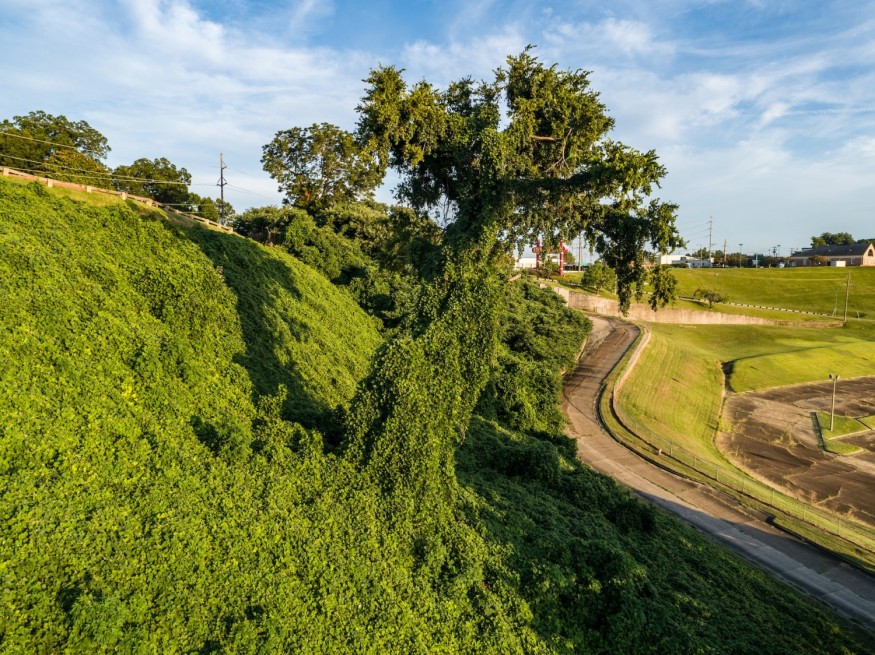
The notoriously invasive kudzu vine, which spreads at a rate of 1 foot per day and has the potential to become a serious pest, may soon be found in the Midwest US.
Invasive Kudzu Vine Guns for Midwest US
The Great Lakes were named as kudzu's next frontier by experts at Purdue University-Fort Wayne in a report that was released earlier this year.
The hardy vine known as kudzu was first introduced to the United States from Asia as a decorative plant before being utilized to stop erosion. Kudzu also produces huge, fragrant purple blooms and brown, hairy seed pods in addition to its beefy vines. It quickly became out of control and was taken off the Agricultural Conservation Program's list of permitted species.
It was declared a "noxious weed" by Congress in 1998 and is now referred to as "the vine that ate the South," according to a reference book jointly created by National Park Service and US Fish and Wildlife Service.
Rapid Spread at 1 Ft Per Day
Speed is the plant's main weapon, according to Jordan Marshall, a Purdue University-Fort Wayne professor of plant biology as well as the study's lead researcher.
According to Marshall, the kudzu vine can climb over other plants and grows quite quickly. In essence, it shades out the other plants as it spreads over them. And it's at this point that we start to notice tree losses, ground cover, and other supposed-to-be-there elements.
According to The Nature Conservancy, kudzu vines can mature at a height of up to 100 feet and grow up to a foot each day. Additionally, kudzu spreads swiftly due to the unusual manner its root systems form. Kudzu spreads its seeds on its own, unlike most plants that depend on the wind or other creatures to do so.
According to Marshall, they usually grow and reproduce vegetatively, starting from the roots and then developing new roots for their vines.
The study by Marshall and Kovach-Hammons was recently published in the MDPI journal Plants.
Invasive, Cascading Impact
Other plant life is smothered by kudzu growth, which has a cascade effect on the ecology.
According to Marshall, wherever there is an obvious decline in plant species or diversity, there will be a chain effect on wildlife and insects, which will subsequently have an impact on bird and large mammal populations. As plants start to decline, it actually starts to cascade down.
Kudzu has spread over the southern US and much of the eastern shore since it was originally introduced over a century ago.
Infestations have been identified in five Michigan counties as well as northern Ohio and northern Indiana, according to a published report from the Great Lakes Echo. Marshall thinks that kudzu was accidentally introduced to Michigan communities by humans, not by natural spread, because of the significant gaps in the established infestations.
Warm Temperatures or Summer Season
As the temperature surrounding the Great Lakes grows warmer, the battle against kudzu will only become more difficult. In regions with hot summers and mild winters, the plant thrives.
It will keep spreading as it grows so well, according to Marshall. The environment and climate are ideal for kudzu to continue expanding.
Nevertheless, there are methods for preventing kudzu. Marshall thinks it's best to take action right away to prevent the plant from spreading further.
According to Marshall, to kill the root crowns, people must really go out, chop the vines and pull out roots.
It is not an easy procedure that can be completed in a single day or even in a single year. Depending on the size of the infestation, it may take several years of pulling and monitoring to completely eradicate kudzu because its seeds can survive for a long time in the ground, The Hill reports.
Related Article : Supergenes, High Temperatures Promote Spread of Common Ragweed, Allergens at Higher Levels
© 2025 NatureWorldNews.com All rights reserved. Do not reproduce without permission.





